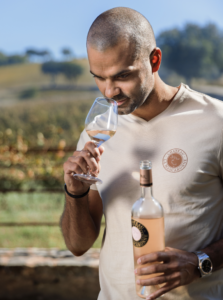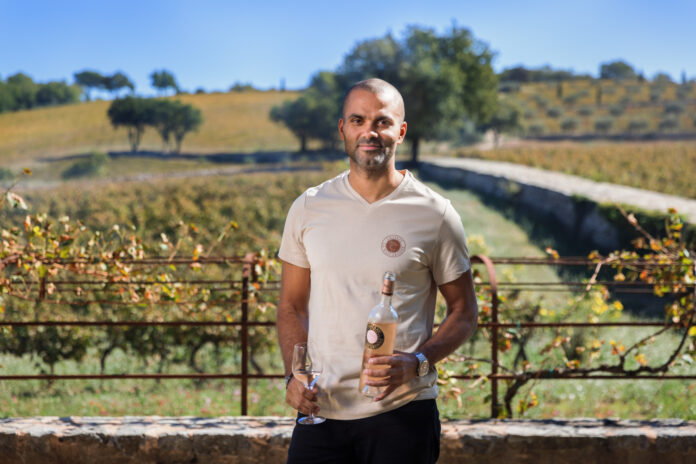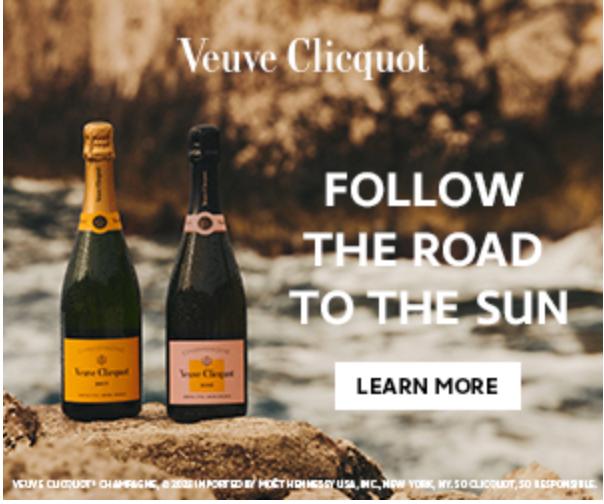NBA Hall of Famer Tony Parker shares his dinner party secrets, favorite french summer escapes and the future of the Rose’ Revolution.
In his incredible basketball career, Tony Parker earned four NBA Championships with the San Antonio Spurs, was selected for six All-Star teams and named MVP of the 2007 Finals.
But these days, his passion for food and wine is keeping him even more inspired.
Starting as a boy growing up in France, the memorable dinner parties he hosted during his NBA days, his summer escapes to French Vineyards during the off-season.
It’s no surprise that now he diving into the French wine world, buying Château La Mascaronne in Provence with legendary business partner Michel Reybier.
A magnificent adventure for the next vintage of his life’s journey.

Today I sat down with Tony Parker (over audio-only speakerphone) for a conversation about dinner parties, french vacation, getting busy in vineyards, and the future of Rose’ wine.
The conversation has been edited for length and clarity. The full conversation can be found on our YouTube channel.
Also, the podcast version is here:
You’ve been diving into the world of winemaking with Michel Reybier and his team. Can you talk a little bit about the adventure, any surprises or lessons?
It’s been amazing. I always wanted to invest in a project like that. The first time I tried wine was when I was 17 years old. I wanted to keep learning about it and get my knowledge better around the wine world. And so when I was 19, I finally made enough money to afford all those great wines.
I was lucky enough to play for a coach who loved wine, had a huge collection, was reading wine magazines every trip. And so that’s how we bonded. As I got better, in my knowledge of wine, I started to invite all the best [people] in San Antonio to come to do a nice dinner at my house with Coach Popovich, and then the next day I would invite them to a Spurs game.

Then during the summer I started making trips to the vineyard. I started to know them better. Because in the wine world, obviously, you have great families. They’re super passionate. And that’s how I started; working on my allocation and the good bottles, the Reserves.

When I retired I wanted to be more involved. But it’s very hard to invest in the wine business because it’s either in the family for generations and generations. Those big companies buy everything. And so I was very lucky, through mutual friends I met Mr. Reybier and after talking for six or eight months, we decided to become partners. Now I’m a proud Owner / Ambassador / Everything.
You mentioned the wine dinners you had in San Antonio. Just for us massive foodies, can you help us fantasize for a moment?
What kind of food was served? What kind of wines were poured? Can you take us back to those nights?
I had a private chef. My private chef would work with the vineyard. We tell them who’s coming, how many people, which bottles and what year they will send us.
Then they will work with my staff to make sure we make a menu accordingly, to make sure that everything is matched with what we are drinking.
So when the [dinner party] came to my house, we tried [the vintages] 1969, 1982, 2000 and 2009. It was unbelievable. Great bottles, great vintages.
And for me, I’m very lucky too because I’m born in 1982 and it’s one of the best years for wine, especially in Bordeaux. So every time I visit a castle in Bordeaux, the employees are always super happy because it’s a good opportunity for them, as the owner, to open an ‘82 [vintage].
Most of the time, they’ll come and say thank you to me, saying it’s [their] first time trying an ‘82 [vintage]. Because nowadays, they don’t open those 82’s a lot.
You’ve hinted at your sports background, obviously you have become a master. Is there any lesson that you mastered in sports that you’ve brought into the wine world with you?
The passion and the work ethic. Obviously in the wine world I will never try to be and talk like a Sommelier, they studied for that. Even if I have good knowledge and I’ve been working with vineyards. And I’m learning all the time, especially since I’ve been owning vineyards. I did Harvest. I did the assemblage. Which is when you try all the possible [options], and you decide what the wine is going to be.

I’ve been working with great directors. Our director is unbelievable. The director at La Mascaronne, she’s great too. And so for me, it’s been great knowledge, and a great learning process to learn even more about wine.
What inspired you to choose the partner with Chateau La Mascaronne?
When I met him, I knew he was huge in the wine business and obviously it brings a lot of credibility when you work with somebody like Michel Reybier because he’s been at this for so long and he’s the owner of one of the best wines in the world with Château Cos d’Estournel.
That’s how I knew him and that was big time. When he talked about La Mascaronne, he bought it from Tom Bove.
Back in 2006, when I started going on vacation every summer, I started drinking Rose’ with my brothers and my friends. We love rose’ in the summer.
That’s when Miraval took off. Brad Pitt bought it with Angelina [Jolie]. He bought Miraval from Tom Bove.

So [I thought] if Tom Bove hit that property perfectly with Miraval, for sure [it can happen] with La Mascaronne, it’s just a matter of time before we can do something amazing.
What’s next for you as far as the wine world goes?
Our premium rosé just came out from La Mascaronne. Only 3,000 bottles.
We’re working on more premium one’s now. I think that’s where things are going with rose’s. All these big companies and all the knowledge that they get from the red wines is coming into the Rosé world, where the Rosé is going to get better and better.
For more information on Tony Parker and La Mascaronne:



